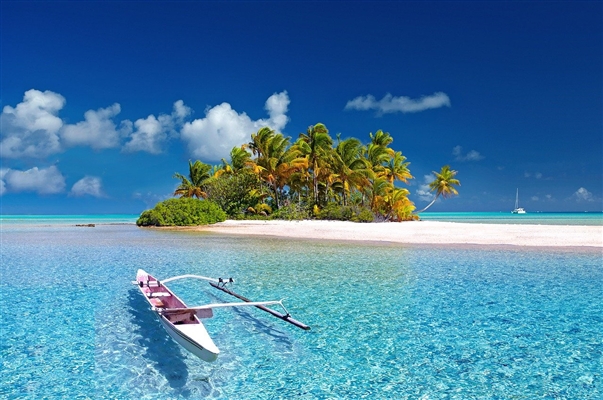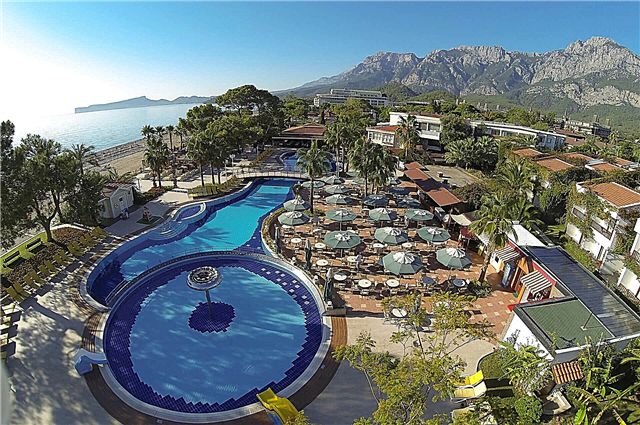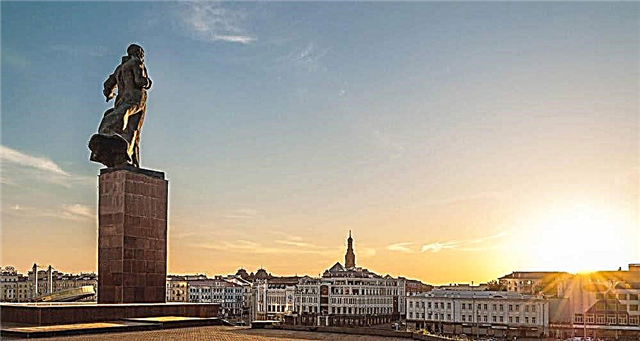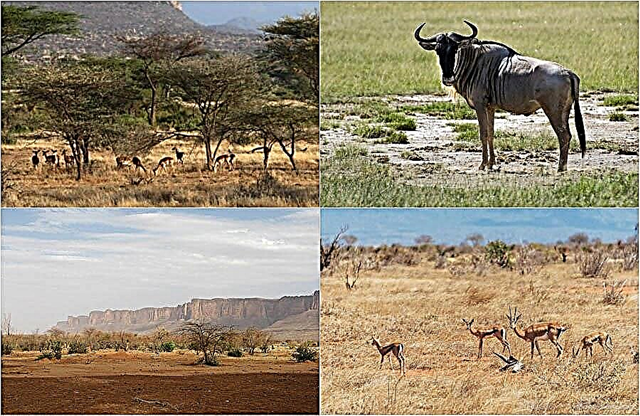We are getting closer to South Africa and find out what sights of Angola can be seen by tourists, first of all, from the variety of beautiful places. We will draw up a map of the location of objects, which will help you plan your walk route. We will tell you about everything that you need to see with your own eyes when visiting the state.
Each tourist will tell you that the most popular tourist routes run through the territories of Europe, Asia, America. And only the most sophisticated of travelers will argue that there are many interesting and attractive places in Africa. One of these countries is Angola - the former colony of Portugal. The civil war, which lasted almost three decades, caused irreparable damage to the country's economy. But the Angolans are making every effort to restore it, including through tourism.
The origins of the state begin in 1576, it was from this year that the extensive slave trade and the formation of the fort by Portuguese forces began. By the way, the Portuguese language has stuck to this day.
Interesting places in Angola - its natural resources. There are no special historical sights in the country, but there are many national parks with diverse fauna, beautiful ocean beaches, impenetrable tropics, the Namib desert. Lovers of architecture will not be bored either. Believe me, after the trip, photos of Angola will take pride of place in your album. Let's get to know this amazing country and its interesting places.
Fortress of San Miguel


The history of the capital of Angola - Luanda begins with it. Erected by the first governor of Angola, Portuguese colonizer Paulo Dias de Novais, the fortress was necessary to protect the harbor and village, which served as a place for the transfer of captive slaves to Brazil and America. The construction of the fortress became an example of loyalty to the Portuguese government. In 1641 there was a battle with the Dutch, who occupied the fortress for a while, but in 1648 surrendered their positions to Portugal for many years. Then the building served as a prison for the rebels who opposed the colonialists. At present, the National Museum of the Angolan Army operates in the fortress. The architectural buildings of the fortress are well preserved and are protected by the state. You can see the museum by purchasing an entrance ticket for 2 euros.
Museum of Anthropology


Founded shortly after the declaration of independence of the republic, in 1976. The collection of the museum consists of objects of everyday life of all ethnographic groups of Angola: tools of cattle breeding, fishing, agriculture, hunting, etc. There are many ceramics, folk musical instruments are exhibited, there are objects of religious veneration, symbols of power, photos of Luanda. In total, the museum has 14 halls with 6,000 exhibits. The museum has a library with a rich collection of books on the topic of anthropology, and periodically there are temporary exhibitions. The entrance to the museum is 3 euros.
Slavery museum

It was also created immediately after the overthrow of colonial dependence in order to depict the history of slavery in the country. The Portuguese Empire enslaved the people of Angola and established a transatlantic slave trade with Africans, supplying them mainly to America. The country became the main supplier of slave power. At the beginning of the 17th century, the annual export of slaves was 10,000. The museum contains hundreds of exhibits historically associated with the slave trade. Entrance to the museum is 1 euro.
Natural History Museum

What to see in Angola is advised to every tourist? The most visited and fascinating museum. Among the exhibits on display are samples of plants growing on the territory of the republic, stuffed animals, fish, birds, insects. “Your child will be especially interested here. For the youngest visitors, thematic exhibitions and various events with educational topics are held. " The museum was founded in 1938 and was located in the fortress of San Miguel. Later, a new building was built for him, where the department of natural history moved, which became a full-fledged museum. In terms of attendance, it ranks first among all objects in the country - 1,700 visitors per month. Entrance to the museum - 2 euros.
Oscar Ribash House Museum

"Visiting this place will be interesting for tourists who collect information about the local culture." Oscar Ribash is a distinguished writer of Angolan descent. The son of an African woman and a European, he paid much attention to local folklore, studied religious rituals, rituals, beliefs, fairy tales, and proverbs. This is the only literary museum in the country. Everything in it is connected with the life and work of the writer: interior items, household items, documents. The writer lived in this house from 1975 to 1983, and later left for Portugal. The ticket price is 1 euro.
Cathedral of the Holy Savior

In a guide with attractions of Angola, photos and descriptions, you will always find this object. It began to be erected in the middle of the 17th century at the suggestion of local residents who wanted to have a worthy temple among the rich buildings of the upper city. It was originally named after the Blessed Virgin Mary. Renamed at the beginning of the 19th century. For various reasons, over the course of a century, the temple fell into disrepair and was restored. It acquired its current appearance in the form of a semicircular pediment, arched doors and domes in 1900. Later it was recognized as a national treasure and protected by the state.
We advise you not to sit in one place, but to rent a car and drive around the neighborhood. Everything is there for independent travel, especially the good roads are worth emphasizing, which is very surprising for an extremely impoverished state. Where to go in Angola? First of all, we recommend visiting North Kwanza, Bengo, and Malange, this will be enough for a complete perception of African life.
Cameo National Park

It was established in 1935 as a protected hunting area. But in 1957, its territory was demarcated and declared a national park. Its area is 14.5 hectares in the Zambezi River Valley. The territory of numerous pastures, vast meadows and sandy plateaus is densely populated with many species of animals. Among them, the most famous are: wildebeest, rare spotted hyenas, several species of hippos, lions, leopard populations and other species of African fauna and flora. There are also a wide variety of birds.
Luanda architecture

The sights of Luanda lie in its colonial architecture, which is represented by old buildings made of natural materials: wood, clay, stone. The unusual color of such buildings is hardly found anywhere. Several fortresses, the building of the university are characteristic features of the architectural predilections of the colonialists. The churches of the Jesuits and Carmelite nuns were built in the same style in the middle of the 17th century. The Temple of the Madonna of Nazareth, the governor's residence - all these are the sights of that period. Portuguese culture can also be seen in the mosaics of ancient sidewalks. In recent years, the city has undergone extensive reconstruction, which is gradually replacing the signs of the colonial era.
Kalandula waterfall

One of the largest waterfalls in Africa. Its height is 105 m and width is 400 m. It is located 420 km from Luanda. Good highways lead to it and you can get from the capital in five hours. The waterfall resembles a horseshoe in shape, consists of numerous jets of water flowing between huge boulders scattered around the perimeter of the waterfall. Over the years, water washes away the boulders at the bottom of the waterfall and because of this, landslides periodically occur, which is unsafe for tourists who want to swim under the streams of water. "When visiting the falls, do not forget to bring a change of clothes and a raincoat."
Pungo Adongo Black Stones


They are huge boulders of solidified lava and have bizarre shapes. They got their name from the nearby small town of Pungo Adongo. Local residents have many legends associated with them. For example, there are male and female stones, which, when touched, improve sexual functions. There is an observation deck on one of the tallest stones, and restaurants are located next to them.
Lubango


In this city, located 677 km from the capital, there is one of the attractions of Angola - a copy of the Brazilian statue of Jesus Christ, albeit in a reduced size. There are three such monuments in the world: in Angola, Brazil and Portugal. Angolans claim that they are all located at the same distance from each other. During the civil war, the monument was targeted by the South African troops. But the figure of Christ survived and traces of shells and bullets can be seen on it.
Namib Desert


It would seem that there is not and cannot be interesting in the desert. But not in Namib. Even in one of the driest deserts, which is the Namib, there are striped zebras, oryxes, antelopes, elephants. From the flora, the mirabilis plant is found (lat... Beautiful), which grows only here. Scientists ascribe a millennial existence to it. And in the Namib Desert there is the Sossusflei region, where salt lakes meet and the Dead Valley with trees blackened from the heat is located.
And most importantly, the collision of two natural wonders - huge masses of sand and the Atlantic Ocean. We recommend you to see this wonder of the world for sure and plan your trip in the guidebook as the first item, the photos are fascinating.
Kissama National Park

It is the oldest nature reserve in the country. Created by the Portuguese colonialists in 1938, it has become a haven for a wide variety of animals from giraffes, elephants, buffaloes to the unique black sable. During the war, the animal population was almost exterminated. The government declared the park national and in 2001 a large number of various animals were brought here from the reserves of neighboring countries, thanks to which the fauna of the reserve began to recover.
By the way, about 20 ethnic families of different nations live in Angola. The largest family - Ovimbundu, today the group makes up more than 40 percent of the total population of the state. Other groups - Ambundu (about 27% of the total population) and Congo (only 10%).
Serra de Leba

The mountain range in the province of Huila is famous for its winding serpentine mountain range, built by the Portuguese in the early 70s of the last century. Thousands of commemorative cards have been issued with the image of this serpentine and even a note of 5 Angolan kwanzas. On any photo of the city of Luanda, there was a serpentine. You can see it from a specially equipped observation deck.
Mupa park

Another national park that received state status in 1964. Initially, the territory of the park of 660 thousand hectares was intended to protect the population of giraffes, which were almost completely exterminated. Subsequently, lions, wild dogs, leopard families, hyenas and other animals began to live here. There are also a lot of birds, about two hundred species, including the rare Miombo tit, the barred crane (pictured) and beautiful glossy starlings. Rapidly growing human settlements in the park, civil war, geological surveys have led to the fact that the number of animals in the reserve has decreased. But the state is trying to monitor the situation.
Attractions of Angola on the map
How to plan your trip cheaper?
- Empirically, we advise you to look for plane tickets to Luanda through Air sales, it searches among all airlines and provides the result in a few seconds, which is very convenient when searching in a short time.
- As always, it is better to book hotels through Booking, at a cost a little more expensive than other search engines, but the hotel database is one of the largest in Africa, and the administration is always vigilant about the quality of services provided by landlords, at this stage it is not worth saving.
- Be sure to draw up travel insurance, this item is the main one in any trip on your own.











